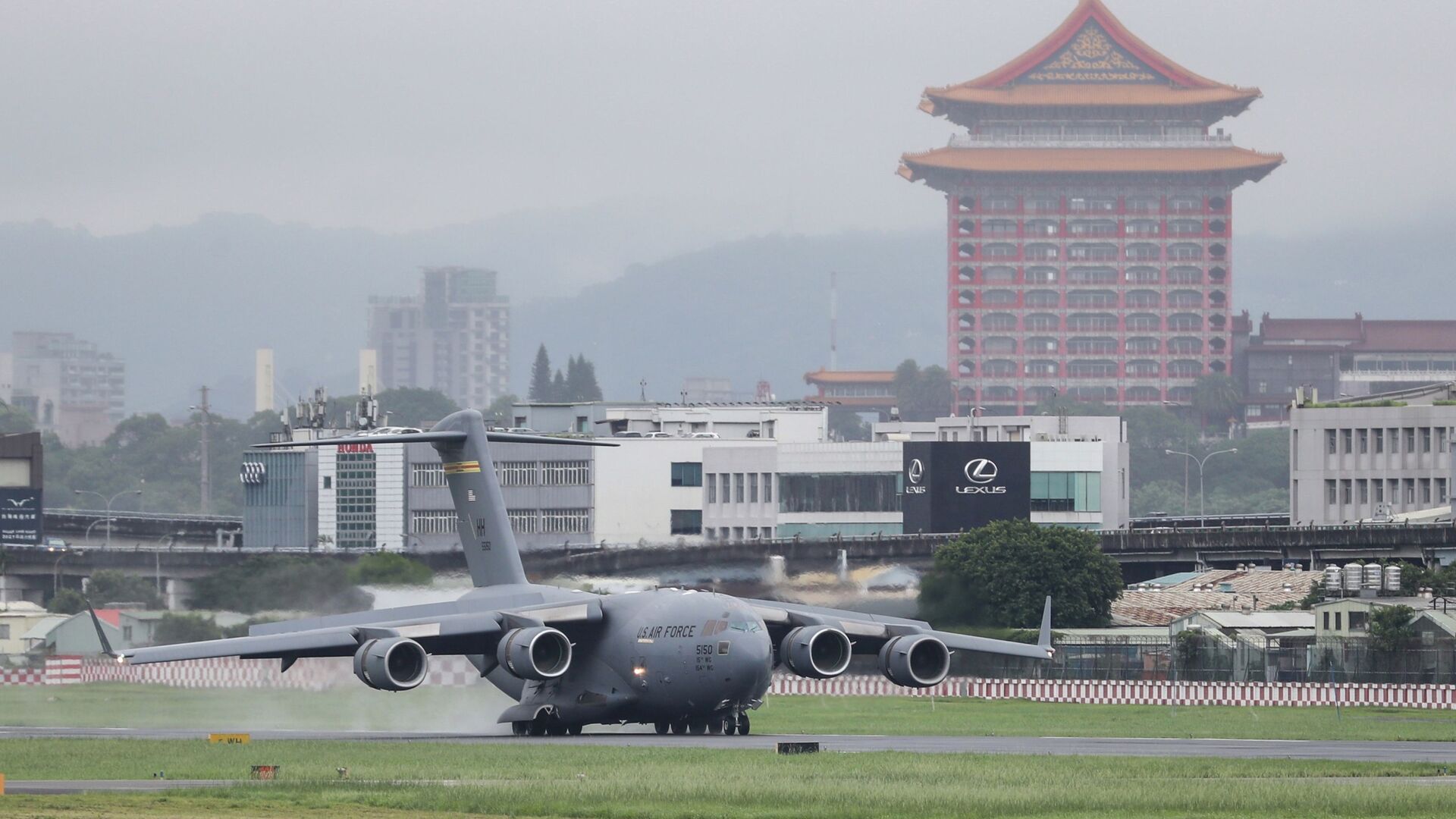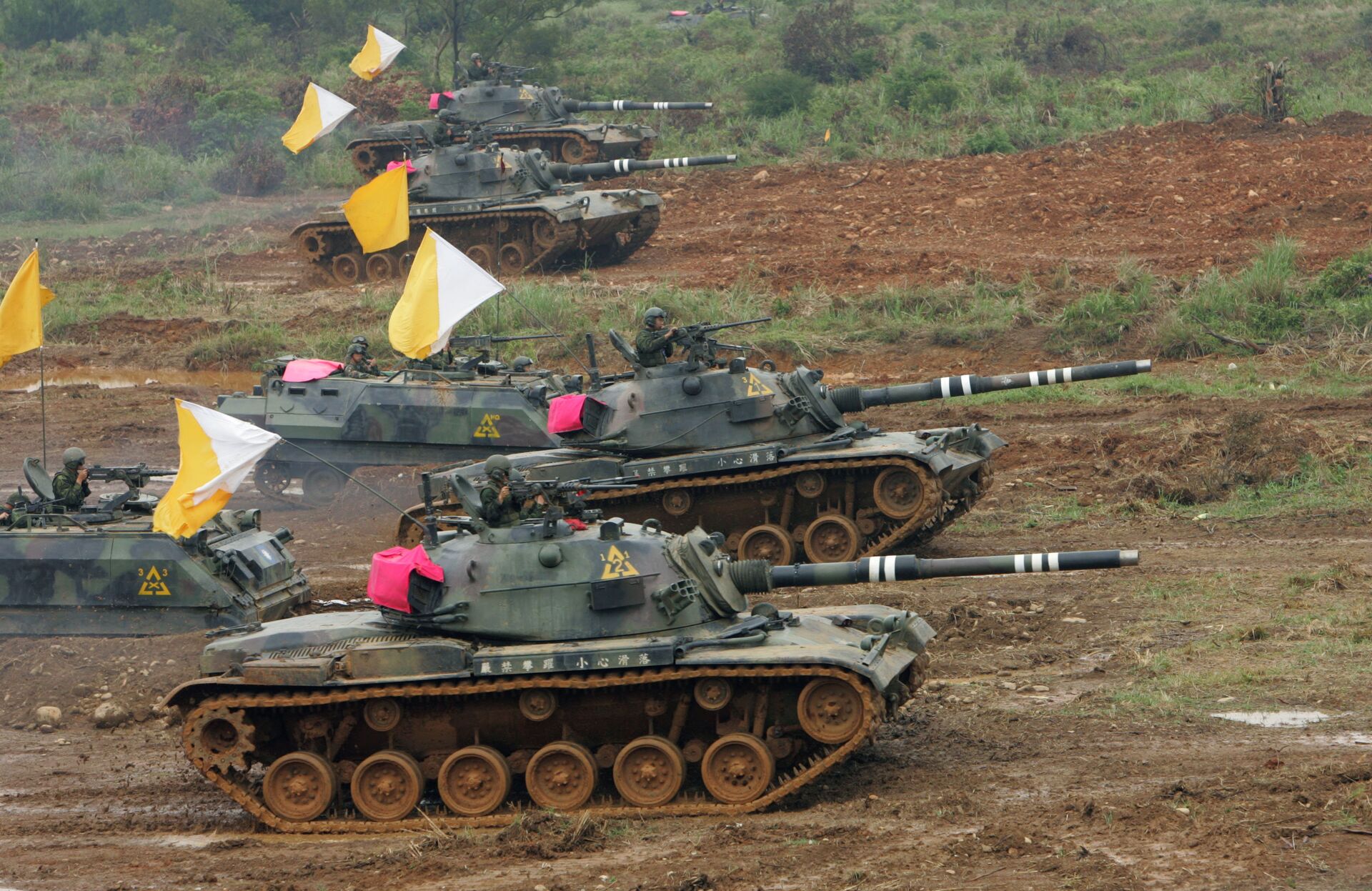Taiwan’s Defense Ministry Reveals More Than 600 US Troops Visited Island Since 2019
21:56 GMT 09.11.2021 (Updated: 12:43 GMT 19.06.2023)

© AP Photo
Subscribe
A biennial report published by Taiwan’s defense ministry has for the first time given explicit numbers for how many US troops have visited the autonomous island for training in recent years. The news expands upon revelations last month that US forces had been there for more than a year.
Hundreds of US troops have traveled to Taiwan over the past two years for more than 100 different training programs, while an almost equal number of Taiwanese forces went to the US for the same, the Ministry of National Defense reported in its 2021 National Defense Report.
According to the biennial report viewed by the South China Morning Post, nearly 2,800 US and Taiwanese troops were involved in 384 exchange programs between September 2019 and August 2021. That includes 542 Taiwanese military personnel who came to the US for 175 different programs, and 618 US troops who took part in 107 programs on the island of Taiwan.
The report also notes 1,639 personnel from both militaries were involved in 102 other programs, but didn’t state where they took place.
That’s a significant increase over the roughly two dozen US Special Forces and US Marines operatives the Wall Street Journal revealed last month had been on the island for more than a year. The news, which provoked outrage in Beijing, was unexpectedly confirmed by Taiwanese President Tsai Ing-wen, during whose five years in power the autonomous island has grown increasingly close to Washington.
In a separate story that broke on Monday, a Pentagon staffing sheet obtained by Foreign Policy magazine shows that US personnel have been stationed on Taiwan since as early as 2008. Their numbers are relatively small, sometimes as few as seven or as many as 30, but nonetheless provocative.
On Tuesday evening local time, a US Navy C-40A airliner carrying a US congressional delegation was spotted making a surprise visit to Taipei, too, flying from Clark Air Base in the Philippines. Neither Taiwanese media nor Pentagon spokesman John Kirby said which lawmakers were on the flight, but Kirby told reporters this was the second such congressional trip to Taiwan this year, adding that “it's not unusual.”

Taiwan President Tsai Ing-wen, U.S. Undersecretary for Economic Affairs Keith Krach and Taiwan Semiconductor Manufacturing Company (TSMC) founder Morris Chang attend a banquet for the U.S. delegation in Taipei, Taiwan September 18, 2020.
"We strongly oppose and condemn this,” Chinese Defenсe Ministry spokesman Tan Kefei said of the visit. “Taiwan is an integral part of China. The US has grossly interfered in China's internal affairs, seriously damaged China's territorial sovereignty, and threatened peace and stability in the Taiwan Strait. We call on the US to immediately cease its provocative actions,"
One China
Formally calling itself the Republic of China, the government in Taipei is all that remains of that which once ruled all of China between 1912 and 1949. When the communist Red Army won the civil war and conquered all of mainland China, the RoC retreated to defensible Taiwan, which the new People’s Republic of China was unable to invade. Both governments agree that Taiwan is part of “One China,” but each claims to be the rightful rulers of all of China.
In the decades that followed, the vast majority of the globe switched its recognition of the Chinese government from Taipei to Beijing, including the US, which did so in 1979 amid three joint communiques in which it agreed to end its political and military support for the Taiwanese government. However, the US also passed its own Taiwan Relations Act governing its now-informal relationship with Taipei, and has continued to funnel weapons to them through an informal embassy despite its pledges to Beijing.
The PLA’s Six Threats to Taiwan
Most of the Taiwanese Defense Ministry’s report actually concerns possible circumstances for a Chinese move to forcibly reincorporate the island into China, identifying six ways the People’s Liberation Army poses a threat to Taiwan. They include intelligence, surveillance, and reconnaissance (ISR) capabilities; missile strikes by aircraft, warships, or land-based launch sites across the Taiwan Strait; amphibious landings; area denial using long-range missiles; and observation satellites.

Taiwanese military maneuver U.S.-made M60 battle tanks during the annual Han Kuang military exercises in Hsinchu, northwestern Taiwan (File)
© AP Photo / Wally Santana
It also notes the extensive blockade capabilities the PLA has developed, noting China may try to strangle Taiwan and force it to surrender without a fight - a situation highly preferable, given the massive weapons sales by the US to Taiwan, which has included torpedoes and anti-air systems.
“At present, the PLA is capable of performing local joint blockades against our critical harbours, airports, and outbound flight routes, to cut off our air and sea lines of communication and impact the flow of our military supplies and logistic resources, as well as our sustainability for operations,” the report said.



